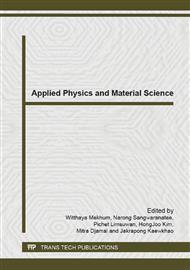p.343
p.347
p.351
p.355
p.359
p.363
p.366
p.370
p.374
The Effect of Lubricants and Material Properties in Surface Roughness and Formability for Single Point Incremental Forming Process
Abstract:
The single point incremental forming (SPIF) is a manufacturing process which allows small batch and asymmetric shape fabrication. The research focuses on its applications by consider surface roughness and formability. The surface roughness of specimen was resulted by the influence obtained between tool and specimen, where the lubricant played a significant role during the forming process, as well as material elongation as a mechanical property governed the formability of metal sheet. Surface roughness tester, SEM, EDS and profilometer were used for the characterizations. The results showed that low roughness value (Ra) of SUS 304 and SUS 316L obtained by applying air blowing as a lubricant, while Ti Gr2 could obtain low roughness by using MoS2. The behavior of wear was an adhesive wear which transfer to an abrasive wear. SUS 304 and SUS 316L sheet of test specimens achieved higher depth in forming by air lubricant and MoS2, and Ti Gr2 sheet revealed a better formability with MoS2. Furthermore, the highest depth was correlated with high roughness value for each material.
Info:
Periodical:
Pages:
359-362
Citation:
Online since:
June 2014
Authors:
Price:
Сopyright:
© 2014 Trans Tech Publications Ltd. All Rights Reserved
Share:
Citation:


